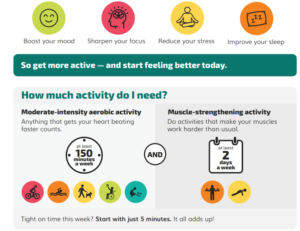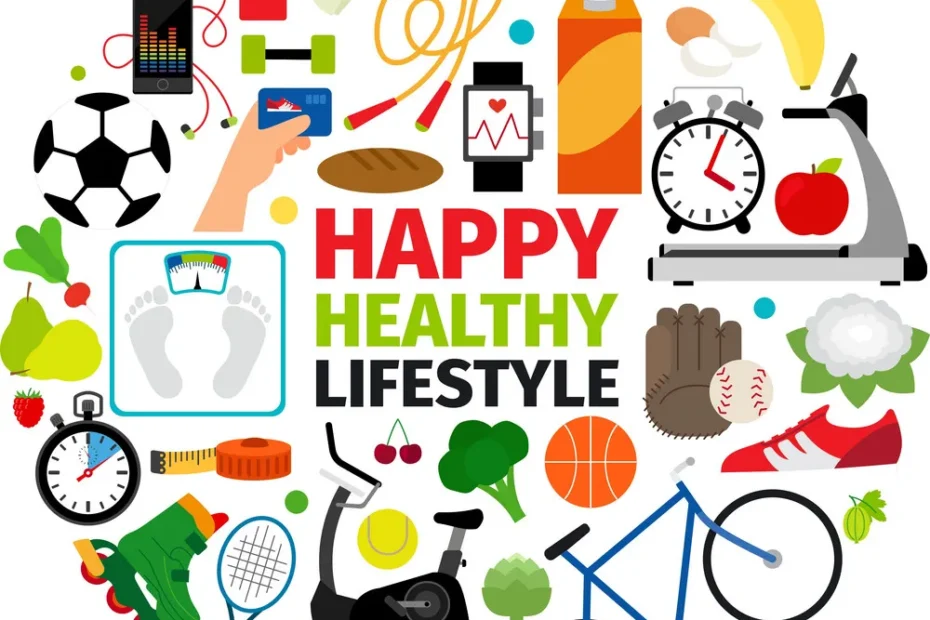You know you should eat better, sleep more, and manage stress. But here’s the truth: knowing what to do and actually transforming your health are two very different things.
Most wellness advice focuses on isolated habits—take this supplement, try that diet, do these exercises. What’s missing is the complete picture. Real, lasting wellness doesn’t come from chasing the latest health trend. It comes from building a foundation of interconnected habits that work together to optimize your biology.
This comprehensive guide breaks down the exact habits that research shows actually work. You’ll learn what to do, why it matters, and how to implement each practice starting today. No gimmicks, no pseudoscience—just practical strategies backed by peer-reviewed research.
Why These Habits Matter
Before we dive into specifics, let’s understand why this approach works. Your body is an interconnected system. When you optimize one area—like sleep—it creates positive ripple effects throughout your entire physiology. Better sleep improves stress management, which enhances recovery, which supports better performance, which promotes deeper sleep.
That’s the power of foundational habits. They build on each other, creating an upward spiral of health improvements. But the reverse is also true. Neglecting one foundation weakens others. Poor sleep disrupts hormones, which increases stress, which impairs recovery, which degrades performance, which worsens sleep quality.
So let’s build these foundations correctly from the start.
1Prioritize Restorative Sleep
Sleep isn’t just rest—it’s when your body performs critical maintenance. During deep sleep, your body repairs tissues, consolidates memories, clears metabolic waste from your brain, and rebalances hormones. Without adequate sleep, nothing else works optimally.
Focus on Sleep Quality, Not Just Quantity
Your circadian rhythm—your body’s internal 24-hour clock—regulates far more than just sleep. It controls hormone production, metabolism, immune function, and even gene expression. When your circadian rhythm is aligned with natural light-dark cycles, everything works better.
Here’s what matters most for restorative sleep:
Deep sleep (Stage 3 NREM): This is when physical recovery happens. Your body releases growth hormone, repairs damaged tissues, strengthens your immune system, and consolidates energy stores. Adults need 60-110 minutes of deep sleep per night.
REM sleep: This stage supports cognitive function, emotional regulation, and memory consolidation. You need 90-120 minutes of REM sleep nightly. Most REM occurs in the second half of the night, which is why cutting sleep short robs you of these crucial minutes.
Circadian alignment: Going to bed and waking up at consistent times—even on weekends—strengthens your circadian rhythm and improves sleep quality dramatically.
Sleep Hygiene Practices That Actually Work

Consistent Sleep Schedule
Go to bed and wake up at the same time daily. This is the single most powerful sleep intervention you can make.
Keep your bedroom between 65-68°F (18-20°C). Use blackout curtains or an eye mask to eliminate all light exposure.
Avoid screens 1-2 hours before bed. Blue light suppresses melatonin production and delays sleep onset.
Get 10-30 minutes of bright natural light within an hour of waking to anchor your circadian rhythm.
2Eat for Energy and Balance
Nutrition isn’t about restriction or following rigid diet rules. It’s about giving your body the fuel and building blocks it needs to function optimally. The foundation of healthy eating is blood sugar stability.
Why Blood Sugar Matters for Everyone
You don’t need diabetes to care about blood sugar. When your blood glucose spikes and crashes throughout the day, you experience energy rollercoasters, mood swings, hunger surges, and inflammation. Over time, these fluctuations damage blood vessels, disrupt hormones, and increase disease risk.
Stable blood sugar means stable energy, clearer thinking, better mood, reduced cravings, and improved metabolic health.
Whole-Food Nutrition Principles
Emphasize whole, minimally processed foods: Vegetables, fruits, whole grains, legumes, nuts, seeds, and quality proteins. These foods come packaged with fiber, vitamins, minerals, and phytonutrients that processed foods lack.
Build meals around protein and fiber: Both slow glucose absorption and promote satiety. Eating protein with carbohydrates can prevent blood sugar spikes by slowing digestion.
Choose anti-inflammatory foods: Fatty fish rich in omega-3s, colorful vegetables full of antioxidants, herbs and spices like turmeric and ginger, and healthy fats from avocados, nuts, and olive oil all reduce systemic inflammation.
| Food Category | Best Choices | Blood Sugar Impact |
|---|---|---|
| Proteins | Wild-caught fish, pasture-raised eggs, grass-fed meat, legumes | Minimal rise, promotes satiety |
| Vegetables | Leafy greens, cruciferous vegetables, colorful peppers | Very low glycemic load, high fiber |
| Whole Grains | Quinoa, steel-cut oats, brown rice, barley | Slow, steady glucose release |
| Healthy Fats | Avocados, nuts, seeds, olive oil, fatty fish | Slows carbohydrate absorption |
| Fruits | Berries, apples, pears, citrus fruits | Lower glycemic index with fiber |
3Manage Stress Before It Manages You
 Chronic stress is one of the most damaging forces to your long-term health. When your stress response stays activated for extended periods, it wreaks havoc on virtually every system in your body.
Chronic stress is one of the most damaging forces to your long-term health. When your stress response stays activated for extended periods, it wreaks havoc on virtually every system in your body.
Understanding Cortisol and the Stress Response
Cortisol isn’t inherently bad. It’s essential for waking up in the morning, responding to challenges, and maintaining metabolic function. The problem arises when cortisol remains chronically elevated due to unmanaged stress.
Chronically high cortisol disrupts sleep, impairs memory, weakens immune function, promotes weight gain (especially visceral fat), increases blood pressure, and raises inflammation. It also disrupts other hormones, creating a cascade of health issues.
Evidence-Based Stress Management Techniques
Mindfulness meditation: Just 10-20 minutes daily can significantly reduce cortisol and improve stress resilience. You don’t need to clear your mind—simply observe thoughts without judgment.
Heart Rate Variability (HRV) training: HRV measures the variation in time between heartbeats, reflecting nervous system flexibility. Higher HRV indicates better stress resilience. Biofeedback training, breathwork, and meditation can improve HRV.
Breathwork practices: Slow, diaphragmatic breathing activates your parasympathetic nervous system (rest and digest mode). Try 4-7-8 breathing: inhale for 4 counts, hold for 7, exhale for 8. This physiologically calms your stress response.
Adaptogenic herbs: Compounds like ashwagandha and rhodiola have been shown to help the body adapt to stress and support healthy cortisol patterns. However, herbs should complement—not replace—lifestyle changes.
Start your day with 5 minutes of deep breathing or meditation before checking your phone.
Spend time outdoors daily. Nature exposure measurably reduces cortisol and blood pressure.
Quality relationships buffer stress. Prioritize meaningful connections over digital interactions.
Engage in activities you enjoy purely for pleasure—art, music, gardening, cooking.
4Move Every Day—But Recover Intelligently

Physical activity is non-negotiable for optimal health. But more isn’t always better. Rest and recovery are equally critical for seeing results and preventing injury.
The Exercise-Recovery Balance
When you exercise, you create microscopic damage to muscle fibers, deplete energy stores, and stress your cardiovascular system. This stress is beneficial—it triggers adaptations that make you stronger and fitter. But these adaptations occur during recovery, not during the workout itself.
Without adequate recovery, you can’t adapt. You accumulate fatigue, increase injury risk, disrupt hormones, and even impair immune function.
Daily Movement Guidelines
Aim for 150 minutes of moderate activity weekly: This could be brisk walking, cycling, swimming, or any activity that elevates your heart rate but still allows conversation.
Include 2-3 strength training sessions: Resistance training builds muscle mass, strengthens bones, improves insulin sensitivity, and boosts metabolism. You don’t need a gym—bodyweight exercises work well.
Incorporate movement throughout the day: Take walking breaks, use stairs, stretch regularly. Even fidgeting burns calories and improves metabolic health.
Recovery Timing and Strategies

Active recovery: Light movement on rest days (walking, gentle yoga, swimming) promotes blood flow and reduces muscle soreness without adding significant stress.
Sleep optimization: This is your most powerful recovery tool. During deep sleep, your body releases growth hormone and performs most tissue repair.
Nutrition timing: Consume protein and carbohydrates within 2 hours post-workout to optimize muscle recovery and glycogen replenishment.
Mobility work: Regular stretching, foam rolling, and mobility exercises reduce injury risk and improve movement quality.
5Fuel Your Mind with Focus and Calm
Mental health and cognitive function are just as important as physical health. Your brain requires intentional care to maintain clarity, focus, and emotional balance.
Digital Detox Strategies
Constant digital stimulation fragments attention, reduces deep thinking capacity, and increases anxiety. Your brain needs uninterrupted focus time to perform complex cognitive tasks and creative problem-solving.
Implement phone-free zones: Keep devices out of the bedroom, away from meals, and off during focused work periods.
Practice single-tasking: Multitasking is a myth. Your brain rapidly switches between tasks, which drains energy and reduces productivity. Focus on one thing at a time.
Schedule digital breaks: Take regular breaks from screens. Your eyes, posture, and mental clarity will all improve.
Focus Habits and Dopamine Regulation
Modern life provides constant dopamine hits—social media notifications, news alerts, snacks, shopping. This constant stimulation can dysregulate your dopamine system, making it harder to focus on important but less immediately rewarding tasks.
Dopamine reset practices: Periodically abstain from high-dopamine activities (social media, sugar, video games) to reset your baseline. Even 24-48 hours can improve motivation and focus.
Deep work sessions: Schedule dedicated blocks for focused work without interruptions. Start with 25-minute sessions (Pomodoro technique) and gradually extend.
Mindfulness for mental resilience: Regular meditation strengthens attention control, emotional regulation, and stress resilience. It’s literally strength training for your brain.
Mental Wellness Daily Checklist
✓ 10-20 minutes of meditation or breathwork
✓ At least one hour of phone-free time
✓ One focused deep work session
✓ Time in nature or green spaces
✓ Creative or leisurely activity for pleasure
6Stay Hydrated and Mineralized
Water is involved in virtually every biochemical reaction in your body. Even mild dehydration impairs cognitive function, physical performance, and mood.
Optimal Hydration Strategy
Drink to thirst, but proactively: Don’t wait until you’re thirsty to drink. Aim for pale yellow urine as a hydration indicator.
Calculate your baseline needs: A general guideline is half your body weight in ounces daily. A 160-pound person needs about 80 ounces (2.4 liters) as a baseline, more with exercise or heat.
Time your hydration: Drink most of your water earlier in the day to avoid nighttime bathroom trips. Limit fluids 2-3 hours before bed.
Electrolyte Balance Matters
Water alone isn’t enough. You also need adequate sodium, potassium, magnesium, and calcium for cellular function, nerve transmission, and muscle contraction.
Signs of electrolyte imbalance: Muscle cramps, fatigue, headaches, irregular heartbeat, and brain fog can all indicate electrolyte issues.
Get electrolytes from food first: Leafy greens, nuts, seeds, avocados, coconut water, and mineral-rich foods provide balanced electrolytes. Only supplement if needed based on activity level or sweating.
7Expose Yourself to Natural Light and Fresh Air
Humans evolved outdoors. Our biology expects regular exposure to natural light, fresh air, and varied temperatures. Modern indoor living disrupts these expectations.
Circadian Rhythm Synchronization
Bright morning light is the most powerful signal for synchronizing your circadian rhythm. It suppresses melatonin, increases cortisol (appropriately), improves alertness, and sets the stage for quality sleep 14-16 hours later.

Morning light protocol: Get 10-30 minutes of bright outdoor light within an hour of waking. Even cloudy days provide sufficient lux (light intensity) to benefit your circadian system.
Avoid bright light at night: After sunset, dim indoor lights and minimize blue light exposure. This allows natural melatonin rise and prepares your body for sleep.
Vitamin D Production and Beyond
Sun exposure on skin produces vitamin D, which supports immune function, bone health, mood regulation, and inflammation control. Aim for 10-30 minutes of midday sun exposure several times weekly (timing depends on skin tone and latitude).
Grounding (earthing): Direct skin contact with the earth may reduce inflammation and improve sleep. While research is limited, walking barefoot on grass or sand is pleasant and risk-free.
8Build a Consistent Morning and Evening Routine
Routines reduce decision fatigue, anchor healthy habits, and provide structure that reduces stress. Your morning and evening routines bookend your day and set the tone for everything in between.
Morning Routine Elements
Wake at a consistent time: Even on weekends. This strengthens circadian rhythm more than any other single intervention.
Get immediate light exposure: Open curtains or go outside within 30 minutes of waking.
Hydrate first: Drink 16-24 ounces of water to rehydrate after sleep.
Move your body: Even 5-10 minutes of stretching, yoga, or light movement improves energy and focus.
Nourish mindfully: Eat a protein-rich breakfast that stabilizes blood sugar for hours.
Evening Routine for Recovery
Dim lights 1-2 hours before bed: Signal to your body that sleep is approaching.
Digital sunset: Stop screen time 60-90 minutes before bed. Read, journal, stretch, or talk with family instead.
Prepare for tomorrow: Lay out clothes, pack bags, review your calendar. Reduce morning decision-making.
Wind-down ritual: Create a relaxing routine that signals sleep time—warm shower, gentle stretching, reading, meditation.
Consistent bedtime: Go to bed at the same time nightly to reinforce circadian patterns.
9Limit Toxins and Environmental Stressors
You can’t control all environmental exposures, but you can significantly reduce your toxic burden through intentional choices.
Indoor Air Quality
Ventilate regularly: Open windows daily to exchange indoor air with fresh outdoor air.
Use air purifiers: HEPA filters remove particulates. Consider air purifiers for bedrooms and main living spaces.
Minimize synthetic fragrances: Air fresheners, scented candles, and synthetic perfumes release volatile organic compounds (VOCs). Choose fragrance-free or naturally scented products.
Water Quality
Filter drinking water: A quality filter removes chlorine, heavy metals, and many contaminants. Reverse osmosis systems provide comprehensive filtration.
Consider shower filters: Hot showers vaporize chlorine and other chemicals, which you then inhale. Carbon filters reduce this exposure.
Reduce Endocrine Disruptors
Choose glass or stainless steel: Avoid plastic food storage and water bottles when possible. BPA and phthalates leach from plastics into food and drinks.
Select clean personal care products: Many cosmetics, lotions, and toiletries contain hormone-disrupting chemicals. Look for products with minimal, recognizable ingredients.
Minimize pesticide exposure: Buy organic for the “Dirty Dozen” produce items (strawberries, spinach, apples, etc.) that retain high pesticide residues.
10Nurture Relationships and Emotional Connection

Social connection is as important for longevity as diet, exercise, and not smoking. Loneliness and social isolation increase mortality risk by 26-32%, comparable to major health risks.
The Health Impact of Relationships
Stress buffering: Strong social bonds reduce cortisol response to stressors. Even knowing someone cares about you dampens stress reactivity.
Immune function: Socially connected people have stronger immune responses and recover faster from illness.
Mental health protection: Relationships provide meaning, purpose, and emotional support that protect against depression and anxiety.
Longevity benefits: Large population studies consistently show that people with strong social connections live longer and healthier lives.
Building Meaningful Connections
Prioritize quality over quantity: You don’t need hundreds of friends. A few deep, authentic relationships provide more health benefits than many superficial connections.
Schedule social time: Treat relationships like other important priorities. Put coffee dates, phone calls, and family time on your calendar.
Practice vulnerability: Authentic connection requires sharing your real thoughts and feelings, not just surface-level pleasantries.
Contribute to community: Volunteer, join groups aligned with your values, participate in local activities. Community involvement provides purpose and connection simultaneously.
Putting It All Together: Your Implementation Plan
These ten foundational habits are interconnected. Start with the ones that resonate most or address your biggest current challenges. Don’t try to change everything at once—that’s a recipe for burnout.
3-Month Implementation Strategy
Month 1 – Establish Rhythm: Focus on consistent sleep and wake times. This single change improves energy, mood, and decision-making for all other habits.

Month 2 – Add Movement and Nutrition: Incorporate daily movement and improve one meal per day. Build on your improved energy from better sleep.
Month 3 – Address Stress and Connection: Implement stress management practices and prioritize relationships. These become easier with the foundation of good sleep, nutrition, and movement.
Ongoing – Refine and Expand: Continue adding practices (light exposure, hydration optimization, toxin reduction) as earlier habits become automatic.
The Compound Effect of Consistency
Small, consistent actions compound over time into dramatic results. You won’t transform overnight, and that’s okay. The goal is sustainable progress, not perfection.
Each healthy choice makes the next one easier. Each day of good sleep improves tomorrow’s energy. Each nutritious meal stabilizes blood sugar and reduces cravings. Each stress management session builds resilience.
These habits don’t just add years to your life—they add life to your years. Energy, vitality, mental clarity, emotional resilience, and physical capability all improve when you support your body’s natural functioning.
Final Thoughts
Optimal wellness isn’t a destination you reach and then coast. It’s a ongoing practice of supporting your body’s remarkable ability to maintain and repair itself.
You have more control over your health than you might think. Genetics loads the gun, but lifestyle pulls the trigger. These ten foundational habits give you the power to keep that trigger unpulled while maximizing your genetic potential for longevity and vitality.
Start where you are. Use what you have. Do what you can. The perfect plan you don’t follow is worthless. The imperfect plan you actually implement changes your life.
Your future self will thank you for the choices you make today.
References
- Sleep, circadian rhythms and health – PMC
- What Is Circadian Rhythm? – Sleep Foundation
- Circadian Rhythm: What It Is, How It Works – Cleveland Clinic
- Healthy eating for blood sugar control – Harvard Health
- How to Control Blood Sugar With Diet – Mass General Brigham
- Chronic stress puts your health at risk – Mayo Clinic
- Physiology, Cortisol – StatPearls – NCBI Bookshelf
- 11 Natural Ways to Lower Your Cortisol Levels – Healthline
- Rest and recovery are critical for athletes – UCHealth
- Exercise Rest Day: Benefits, Importance, Tips – Healthline
- Effectiveness of stress management interventions to change cortisol levels
- Exploring the Role of Circadian Rhythms in Sleep and Recovery
Related Articles on Remedy Verified
Continue your wellness journey with these evidence-based resources:
- REM Sleep: How Much Do You Need & Deep Sleep Guide
- SSRI Medications vs Natural Remedies: Complete Comparison
- Your Circadian Body Clock: How Sunlight Regulates Sleep, Mood, and Health
- High Cortisol Levels: Causes, Symptoms & Natural Treatment Guide
- How Many Hours of Deep Sleep Do You Need for Optimal Recovery
- REM Sleep: How Much Do You Need & Average Deep Sleep Per Night Explained
- Grounding and Earthing Benefits: Does Walking Barefoot Reduce Inflammation?
- Social Connection and Longevity: Why Relationships Matter More Than Diet
Author Bio
The Remedy Verified Team translates complex metabolic science into clear, practical strategies for everyday health.
Medical Disclaimer
This article provides general information and should not replace professional medical advice, diagnosis, or treatment. Always consult qualified healthcare providers before making significant changes to your diet, exercise routine, supplement regimen, or lifestyle. Individual health needs vary, and what works for one person may not be appropriate for another. If you have chronic health conditions, take medications, or are pregnant or nursing, speak with your healthcare provider before implementing new wellness practices.



